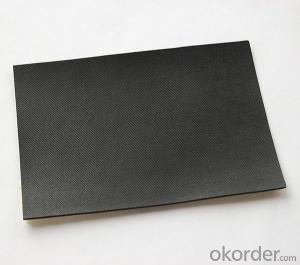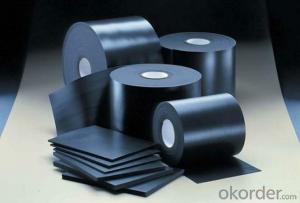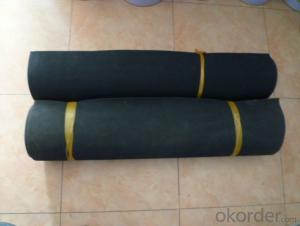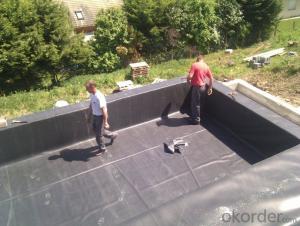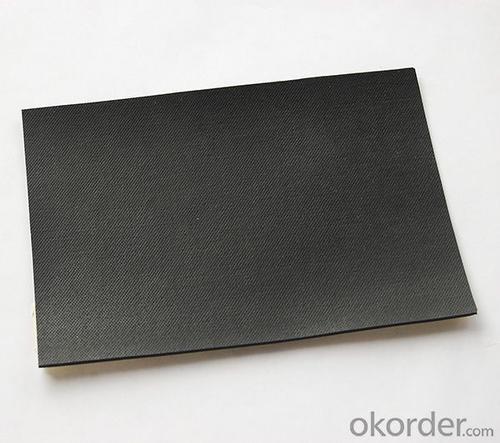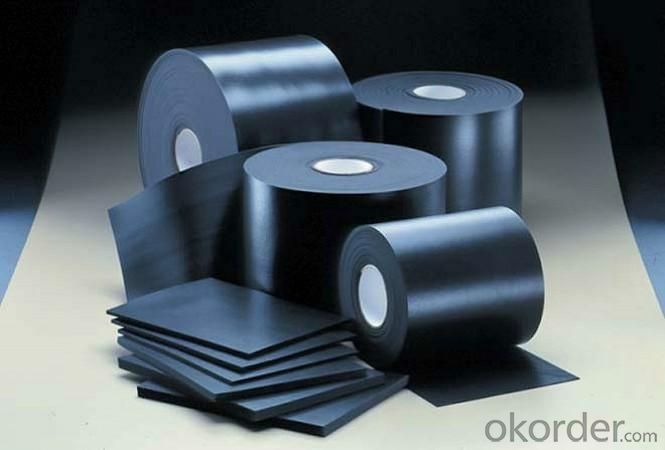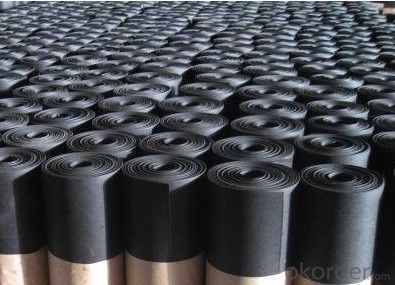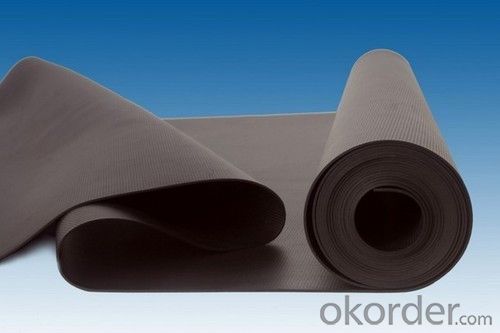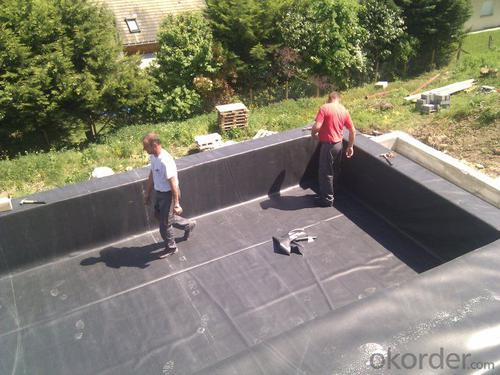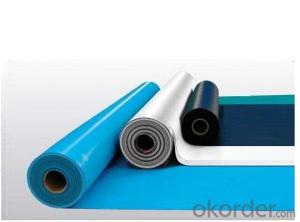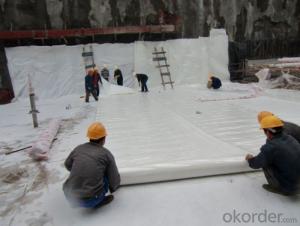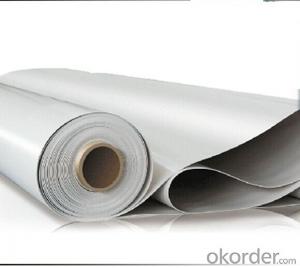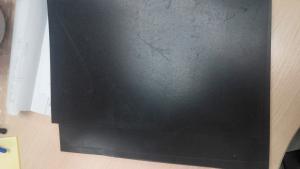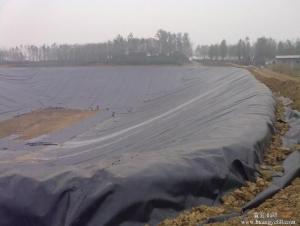EPDM Waterproof Membrane with 0.8mm for Roof Project
- Loading Port:
- Shanghai
- Payment Terms:
- TT OR LC
- Min Order Qty:
- 50000 m²
- Supply Capability:
- 5000000 m²/month
OKorder Service Pledge
OKorder Financial Service
You Might Also Like
EPDM Waterproof Membrane with 0.8mm for Roof Project
Description Of EPDM Waterproof Membrane with 0.8mm for Roof Project:
1. EPDM waterproof membrane is made from ternary ethylene-propylene rubber, which is for waterproofing of exposed and non-exposed applications.
2. EPDM waterproof membrane production adopts the world-advanced equipment of cold feeding extrusion and continuous vulcanization technology.
3. EPDM waterproof membrane is of high elasticity among high polymer waterproof materials and becomes a world-popular waterproofing material.
Main Features of EPDM Waterproof Membrane with 0.8mm for Roof Project:
1.Excellent anti aging performance ,service life up to 50 years.
2.High extension rate,high tensile strength ,small size changes at heat treatment.
3.Good plant roots penetrability resistance and can be made waterproofing layer of planting roof.
4.Special modified molecular structure ,effectively resolving the current domestic and foreign glue joint problem.
5.Good low temperature flexibility ,and good performance of adapting to ambient temperature changes.
6.Convenient application ,solid joint ,no environment pollution.
7.Chemical corrosion resistance ,can be used for special occasions.
8.Good anti-perforated.
Specifications of EPDM Waterproof Membrane with 0.8mm for Roof Project:
| Material | EPDM Rubber |
| Size | 1.2m (width)*20m (length) or customized, weldable type 2.05m or 4m width |
| Thick | 1.2mm, 1.5mm, 2.0mm |
| Type | Vulcanized & Weldable |
| Pattern | Non-reinforced (homogeneous) |
| Certificate | ISO9001/14001 |
Applications of EPDM Waterproof Membrane with 0.8mm for Roof Project:
1. Roofs, Basement, Toilet
2. Industrial and civil building waterproofing
3. Geo-synthetic liner for swimming pool, channels, irrigation system
4. Especially suit for projects with high requirements in durability, anti-corrosion and deformation
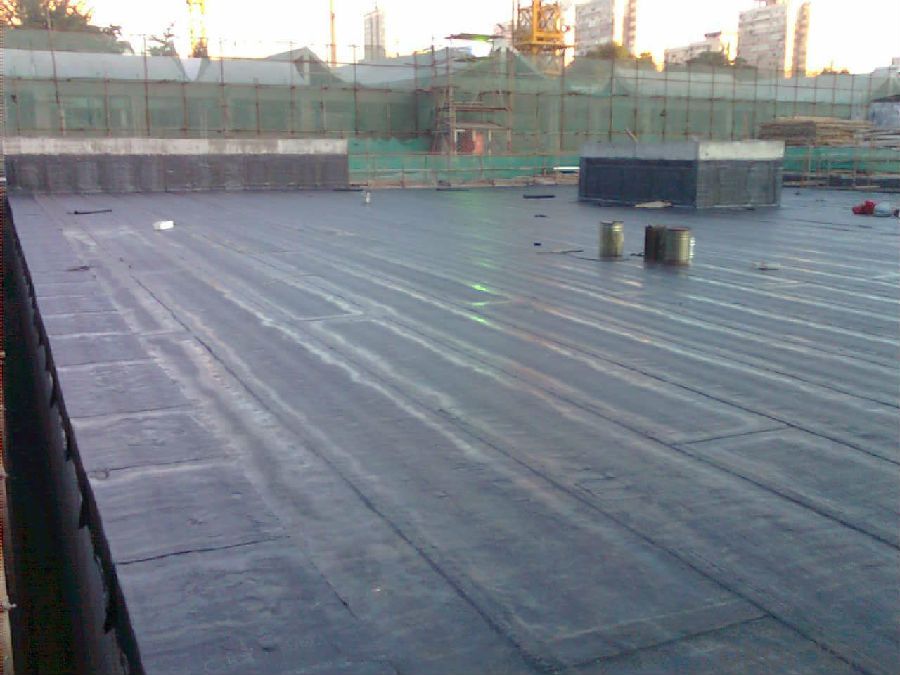
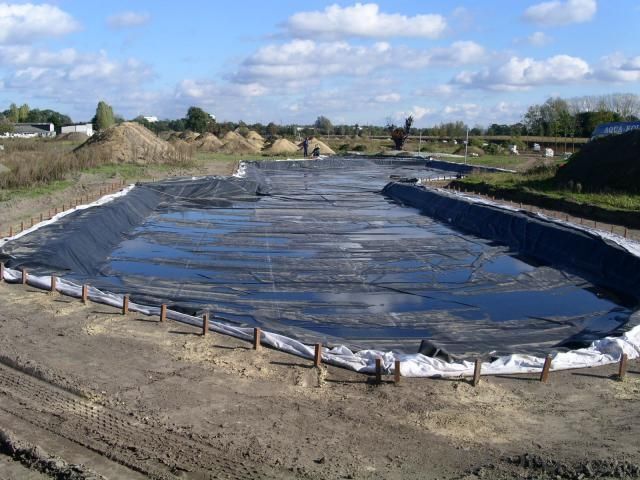

IMages of EPDM Waterproof Membrane with 0.8mm for Roof Project:
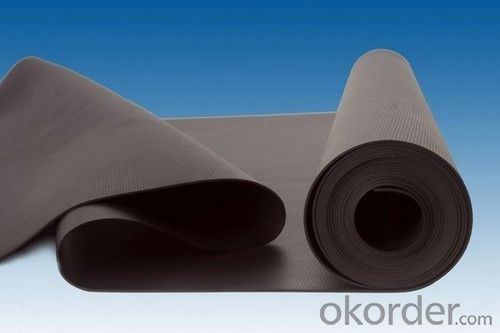



FAQ of EPDM Waterproof Membrane with 0.8mm for Roof Project:
1. What are we supplying?
We are specialized in producing Colorful Asphalt Roof Shingle, SBS/APP modified bitumen waterproof membrane, Self adhesive bitumen waterproof membrane, PVC waterproofing membrane, EPDM rubber roofing membrane, Single Component Polyurethane Waterproof Coating, and Spray Polyurea Waterproof Coating
.
2. How Many years experience do we have?
We have been exported to more than 20 countries in the past 15 years.
3. How long do we usually reply your request?
We always reply our customer within 24 hours.
- Q: Can a waterproofing membrane be pre-fabricated or pre-made for easy installation?
- Indeed, there are pre-fabricated or pre-made waterproofing membranes available for easy installation. Many manufacturers offer these membranes specifically designed to simplify the installation process. These membranes are usually manufactured in controlled factory conditions to ensure consistent quality and reduce the potential for errors during installation. Pre-fabricated waterproofing membranes are made from different materials, such as bitumen, PVC, EPDM, or TPO, and are available in various forms, including sheets or rolls. They are designed for easy transportation and on-site installation. The use of pre-fabricated waterproofing membranes brings several advantages, including increased efficiency, reduced labor costs, and improved installation quality. Contractors can save time and resources by eliminating the need for on-site fabrication. Additionally, pre-made membranes often come with detailed installation instructions, making it easier for contractors to ensure proper installation. Furthermore, pre-fabricated waterproofing membranes can be customized to meet specific project requirements, such as size, shape, or slope. This customization ensures a seamless and effective waterproofing solution. Overall, the use of pre-fabricated or pre-made waterproofing membranes can simplify the installation process significantly and provide a reliable and durable waterproofing solution for various applications, such as roofs, basements, and foundations.
- Q: Is a waterproofing membrane resistant to algae or moss growth?
- A waterproofing membrane is usually resistant to the growth of algae or moss. Its purpose is to form a barrier against water infiltration, preventing moisture from seeping into the underlying structure. These membranes are typically composed of materials that are not favorable for the growth of algae or moss, such as synthetic polymers or rubberized compounds. Furthermore, they are often treated with additives that hinder the growth of organic matter, including algae or moss. Nevertheless, it is crucial to acknowledge that if the membrane is consistently exposed to moisture or damp conditions over time, it may become a breeding ground for algae or moss. Therefore, it is important to regularly maintain and clean the waterproofing membrane to ensure its longevity and effectiveness.
- Q: Can a waterproofing membrane be used in swimming pools?
- Yes, a waterproofing membrane can be used in swimming pools. These membranes are specifically designed to prevent water leakage and provide a durable and long-lasting waterproof seal. Using a waterproofing membrane in swimming pools helps to protect the structure from water damage and maintain the integrity of the pool's structure.
- Q: Is a waterproofing membrane resistant to saltwater or salt damage?
- Yes, a waterproofing membrane is resistant to saltwater or salt damage. Its composition and design make it highly durable and capable of withstanding the corrosive effects of saltwater, ensuring long-term protection against leaks and seepage.
- Q: Does a waterproofing membrane require any special considerations for installation in high-humidity areas?
- Yes, a waterproofing membrane does require special considerations for installation in high-humidity areas. High humidity can increase the moisture levels in the air, which can affect the performance and effectiveness of the membrane if not properly addressed during installation. Here are some important considerations: 1. Moisture control: In high-humidity areas, it is crucial to control the moisture levels before installing the waterproofing membrane. The surface should be thoroughly dried, and any existing moisture issues or leaks should be addressed and fixed before installation. 2. Vapor barriers: Installing a vapor barrier beneath the waterproofing membrane can help prevent moisture from penetrating through the membrane. This is especially important in high-humidity areas where the moisture levels in the air are consistently high. 3. Proper ventilation: Adequate ventilation is key in high-humidity areas to reduce moisture buildup. Make sure there is proper airflow and ventilation systems in place to promote drying and prevent condensation, which can compromise the integrity of the waterproofing membrane. 4. Waterproofing membrane selection: Not all waterproofing membranes are suitable for high-humidity areas. It is important to choose a membrane that is specifically designed and recommended for such environments. Look for membranes with high moisture resistance and durability. 5. Professional installation: Proper installation is essential for the long-term performance of the waterproofing membrane. In high-humidity areas, it is recommended to hire professional contractors who have experience working in similar conditions and can ensure proper installation techniques are followed. By considering these factors, you can ensure that the waterproofing membrane performs effectively and provides reliable protection against moisture in high-humidity areas.
- Q: Can a waterproofing membrane be used in crawlspaces or basements?
- Yes, a waterproofing membrane can be used in crawlspaces or basements. These membranes are specifically designed to prevent water infiltration and are commonly used in these areas to protect against moisture, dampness, and potential water damage. They create a barrier that keeps water out, helping to keep crawlspaces and basements dry and free from water-related issues.
- Q: Can a waterproofing membrane be applied to curved or irregular surfaces?
- Yes, a waterproofing membrane can be applied to curved or irregular surfaces. The flexibility and adaptability of waterproofing membranes allow them to conform to different shapes and contours, ensuring effective protection against water infiltration on curved or irregular surfaces.
- Q: Can a waterproofing membrane be used for railways or train stations?
- Railways and train stations can certainly benefit from the use of waterproofing membranes. These membranes are widely employed in construction projects to safeguard structures from water damage and promote their longevity. In the case of railways and train stations, where they are constantly exposed to weather conditions and the possibility of water infiltration, waterproofing membranes play a vital role in preventing water from seeping into the infrastructure. Waterproofing membranes are typically applied to different areas of railways and train stations, including underground tunnels, platforms, parking areas, and even roofs. These membranes create a barrier that prevents water and moisture from penetrating the structure and causing harm. By averting water infiltration, waterproofing membranes help maintain the structural integrity of railways and train stations, ultimately prolonging their lifespan. In addition to water protection, these membranes offer other benefits such as inhibiting the growth of mold and mildew, enhancing energy efficiency by reducing heat loss, and improving overall durability. They come in various types, such as liquid-applied membranes, sheet membranes, and cementitious coatings, providing flexibility in application based on the specific requirements of the railway or train station project. All in all, it is highly recommended to utilize waterproofing membranes in railways and train stations to ensure their long-term performance and maintenance.
- Q: Can waterproofing membranes be used on roofs?
- Yes, waterproofing membranes can be used on roofs. Waterproofing membranes are specially designed materials that are used to provide a protective layer on roofs to prevent water penetration. These membranes are typically made of materials such as modified bitumen, EPDM, PVC, or TPO, which are highly resistant to water and can effectively seal the roof. They are commonly used in both residential and commercial applications, including flat roofs, low-slope roofs, and even sloped roofs with certain designs. Waterproofing membranes are applied in multiple layers to ensure maximum protection against water damage and can greatly extend the lifespan of a roof by preventing leaks and moisture buildup.
- Q: Can a waterproofing membrane be used on aluminum surfaces?
- Indeed, aluminum surfaces can benefit from the application of a waterproofing membrane. Such membranes possess great versatility, enabling their use on a wide range of surfaces, including aluminum. Their purpose is to create a safeguarding barrier against water and moisture, effectively preventing any potential leaks or water-related harm. By employing a waterproofing membrane on aluminum surfaces, the material's longevity can be significantly extended as it remains protected from the detrimental effects of corrosion and rust, which are often triggered by water exposure. Nevertheless, it is imperative to carefully select a waterproofing membrane that is both compatible with aluminum and suitable for the specific application in order to achieve the most optimal outcomes.
Send your message to us
EPDM Waterproof Membrane with 0.8mm for Roof Project
- Loading Port:
- Shanghai
- Payment Terms:
- TT OR LC
- Min Order Qty:
- 50000 m²
- Supply Capability:
- 5000000 m²/month
OKorder Service Pledge
OKorder Financial Service
Similar products
Hot products
Hot Searches
Related keywords
